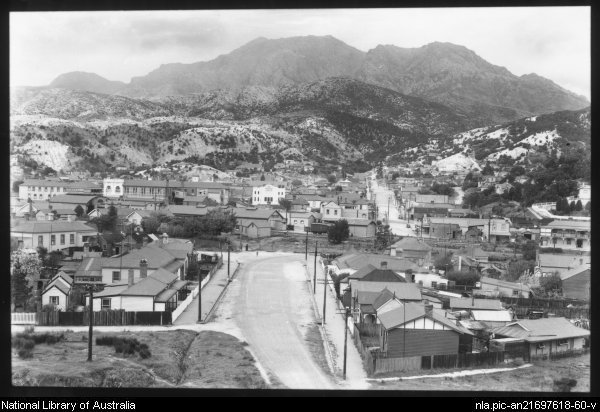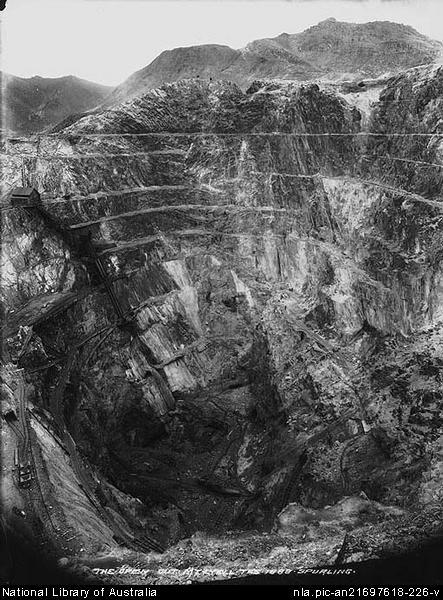|
May 27, 2012
When I was in Queenstown I started to do some research on Stephen Spurling 111. Spurling's' photographic legacy--both landscape and industrial---is usually mentioned in brief overviews--eg., Roslynn Haynes 2006 text Tasmanian Visions: Landscapes in Writing , Art and Photography or overlooked. These do not provide enough information to make any judgements about his body of work.
 Stephen Spurling 111, Queenstown and Mount Owen, circa 1912, NLA
Stephen Spurling 111, Queenstown and Mount Owen, circa 1912, NLA
For instance, Gael Newton only made passing reference to the photographic work of Stephen Spurling 111 in her texts of the 1980s, namely her Silver and Grey: Fifty Years of Australian Photography 1900 - 1950 and Shades of Light: Photography and Australia 1839-1988.
Spurliing11 is also absent from Helen Ennis' Intersections: Photography, History and the National Library of Australia despite the NLA 's extensive collection of Spurling's photographs.
 Stephen Spurling 111, The Open Cut, Mt Lyell, circa 1912, NLA
Stephen Spurling 111, The Open Cut, Mt Lyell, circa 1912, NLA
Burgess' interpretation of Spurling 111's work in her PhD thesis---- The Spurling legacy and the emergence of wilderness photography--- is that his photographic legacy is not his industrial---mining and railway---landscapes, which Burgess interprets as records or documents of progress and development.
The legacy is associated with exploration, bushwalking and adventuring in the unknown wilderness, as it is the emergence of wilderness photography from his long treks in the Tasmanian bush and mountains. Burgess links the wilderness photography with scenic views (the picturesque), the promotion of tourism, the scenic tradition, Romanticism and the paintings of William Charles Piguenit.
|
